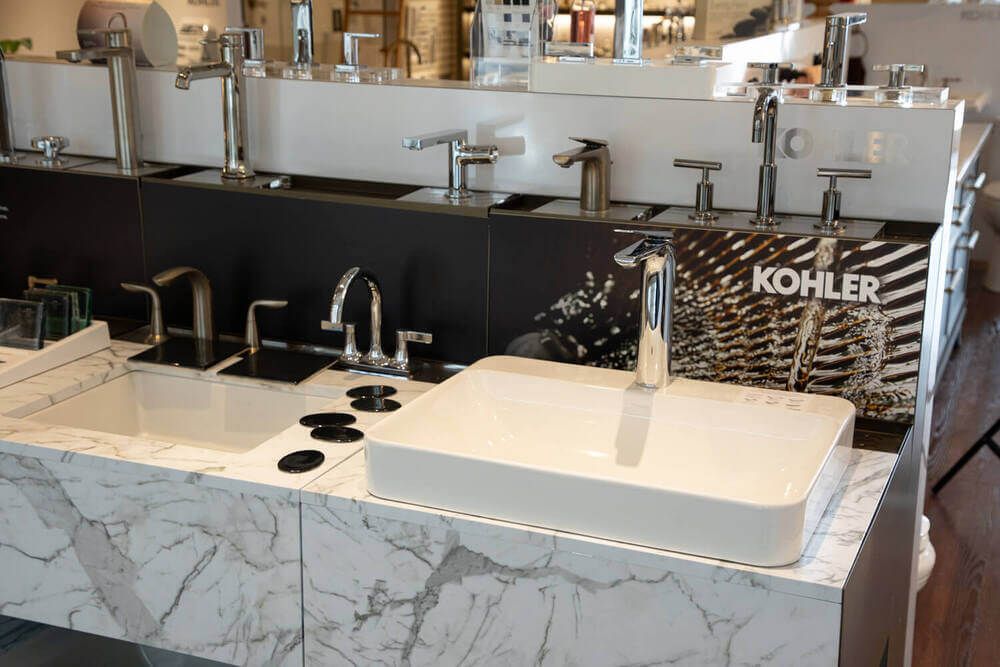The right bathroom sink can make a significant impact, in terms of both form and function. For example, your new bathroom sink can provide utility with features such as more storage space or give your bathroom a unique, bold style. But with so many sink options and so many factors to consider, knowing which sink is best for you can be challenging. We are here to help guide you through all of the different factors and help you choose the best bathroom sink.
Measure Your Space
The first step as you try to choose the best bathroom sink is to establish how much space you have available in your bathroom. Your space will determine which sinks work best for your current bathroom, so take measurements. Remember, the sink must be placed within easy reach of the water supply connections.
When measuring your space, keep these questions in mind:
- Are you replacing an existing sink and working with the same amount of space?
- Are you installing the new sink in a vanity? If so, what sink bowl shapes will your vanity accommodate?
- Do you have an existing faucet that can limit the height of the sink?
- Is your bathroom’s current plumbing setup design for one or two sinks?
While sink sizes are generally standard and work well with countertop cutouts, knowing how much space you have is still vital, especially if you want to get a completely new type or style of sink.
Here is how you need to measure your space.
- If you are looking for an exact replacement, measure your current sink’s length, width, height, and depth and choose one with the exact measurements.
- Width is side to side, and length is front to back, and where you measure those dimensions depends on your sink’s installation type.
- You should measure the height from the floor to the upper rim of the sink. Measure the depth from the deepest part of the basin until you get to the rim of the sink.
Consider Function
To help you choose the best bathroom sink, think about how you will use your new sink. Usage plays a role in the size and design of what type of sink you should look for. For example, if you choose a sink for a powder room where you and others may only be washing your hands, a sink with a shallow basin can get the job done. On the other hand, if you are using your new sink to wash your face or brush your teeth, a deeper bowl may make more sense.
Determine the Installation Type
After you know how you will use your new sink, the next step is to figure out which installation type you want. Your installation type is first determined by whether your new sink will be part of a vanity or not. Here are the sink installation types for vanities:
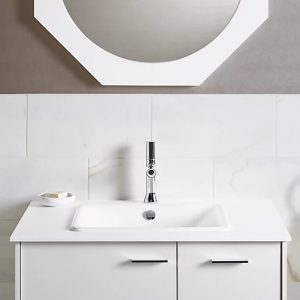
Top-mount sinks (also known as Drop-In) rest on top of a vanity or cabinet, with the edge extending over the countertop. Top-mount sinks are very easy to install and come in many different shapes and sizes.
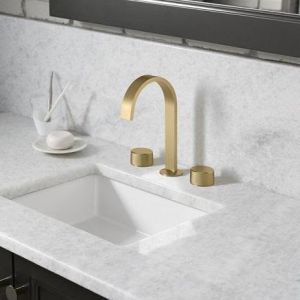
Undermount sinks are installed underneath the countertop. These sinks maximize available counter space and make cleaning the countertop easy.
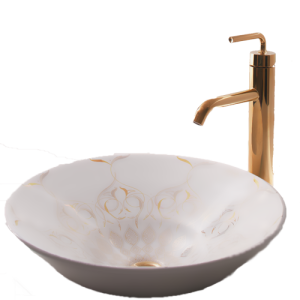
A vessel sink is installed on top of the counter, helping to add extra counter space and create a stylish and unique design.
Also, many bathroom vanities have sink bowls integrated within them, which is something to consider if you are also replacing your vanity.
Here are the sink installation types without vanities:
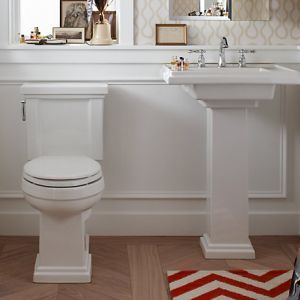
Pedestal sinks rest on a pedestal instead of a vanity or counter and are great for traditional or classical-styled bathrooms.
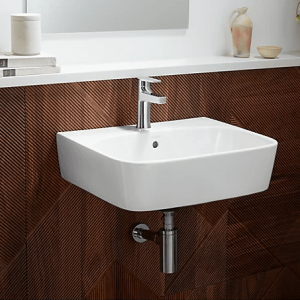
Offset bowl sinks feature space and separation for washing and rinsing, typically one large and one small bowl.
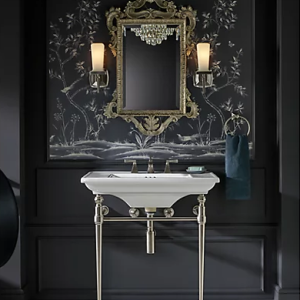
A console table sink is a combination of a wall-mounted sink and a pedestal sink. The sink and countertop are mounted to the wall, supported by two to four legs, or freestanding.
Select a Sink Material
Once you know which installation type to use for your new sink, the next step as you choose the best bathroom sink is to pick a material. Each bathroom sink material comes with unique looks, strengths, and costs.
- Porcelain: The most popular material choice, porcelain is durable, easy to clean, and has a timeless style.
- Cast Iron: Heavier than porcelain, cast iron is highly durable and resistant to dings or scratches.
- Glass: Glass sink bowls can have elegant, avant-garde designs and colors and are particularly popular options for vessel sinks.
Other less common materials you may find in bathroom sinks include metal and even natural stone. When thinking about which material you want, keep in mind how the sink will hold up to cleaning products. In addition, some materials, such as glass, may require more care than porcelain, so make sure you understand the maintenance requirements of each material.
Find Your Style
You may have a set style or design in mind if you replace your bathroom sink, whether you want to keep or change your current bathroom style. Classic, timeless silhouettes and designs indicate a more traditional style that will look stylish many years later. For a more modern design, find sinks with a more minimalist design: sharp edges, simple bowl shapes, and a generally sleek look. If you are interested in a more antique or vintage style, you should look out for sinks with ornate designs or many decorative elements.
Visit Weinstein Collegeville to Help You Choose the Best Bathroom Sink
To find your new bathroom sink, visit Weinstein Collegeville. The team at Weinstein has decades of experience helping people choose the best bathroom sink and offer expert consultation. Our kitchen and bath showroom has many quality bathroom sinks and other fixtures, with a large selection from brands such as Kohler. Make an appointment with our showroom today, and we can help you realize your dream project.
